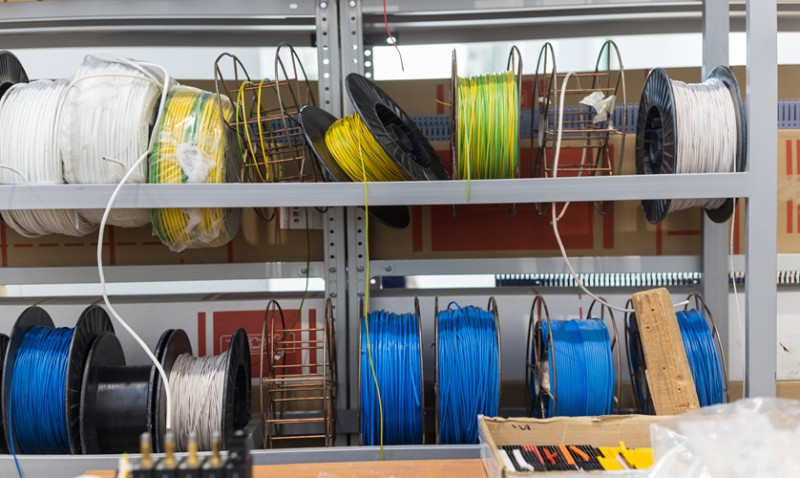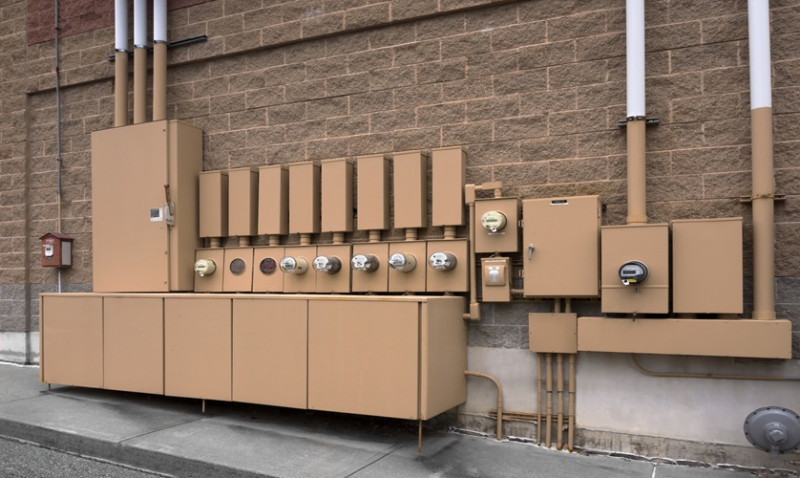
Let’s be honest: being an electrician has its perks – solid pay, variety, skills for life – but that doesn't mean it’s all smooth sailing. Whether you're a DIY enthusiast thinking of taking the plunge into electrical work, a homeowner trying to understand what the trade entails, or an architect working closely with sparkies, it’s important to understand the daily grind of this job.
In this blog post, I’m not pulling any punches. As someone who has been in the trade for well over a decade, here are the five things I truly hate about being an electrician in the UK. Some of them may surprise you, others may sound all too familiar…
1. Crawling Around in Tight, Dirty, Cramped Spaces
Attics, basements, floor voids, and behind kitchen units – these are our workplaces, and they’re as glamorous as they sound. Squeezing into these cramped, cobweb-infested spaces with tools in tow is a daily struggle. Add in summer heat or freezing winter cold, and it’s misery on another level.
Architects and designers, take note: while sleek finishes look brilliant on paper, the routing behind the walls still has to happen. A bit of consideration for the trades when planning those clean lines and hidden sockets can go a long way.
For homeowners and DIYers – doing a bit of rewiring? Prepare for a real workout. It’s not uncommon to end the day covered in dust, scratches and bruises.
It's a job that demands significant physical endurance. You’ll be kneeling, stretching, crawling and lifting more than you’d imagine. And unless you fancy becoming best mates with your local chiropractor, keeping physically fit is less of a suggestion and more of a requirement.
2. Everyone Thinks They Know How to Do Your Job
Ask any sparkie and they’ll nod in agreement: from the bloke at the pub to your latest client’s brother-in-law who “does a bit of electrics,” everyone seems to think they know better. It can be infuriating.
The internet has made everyone a part-time electrician – at least in their own minds. But there’s a big difference between changing a bulb and installing a new consumer unit.
DIY forums and YouTube are great, but they’re no substitute for years of training, safety certifications and hands-on experience. When clients try to cut corners or ignore advice, they’re not just undermining your skills – they're risking their safety.
In an age of Pinterest-perfect homes, sometimes design ideas aren’t practically or legally feasible – yet explaining that without sounding like a party pooper is half the battle. Professionals understand regulations, but they’re often the last ones consulted. That sets us all up for conflict and do-overs.
3. The Paperwork Never Ends (and It’s Not Just Paper Anymore)
Paperwork might not be the first thing you think of when it comes to electrical work – but trust me, it’s a big part of the job, and it’s not fun. Risk assessments, method statements, test certificates, Part P notifications – the list goes on and it’s growing every year.
It’s even more complex when dealing with renovations, historical buildings, or commercial projects where compliance becomes a tangled web of red tape. Missing a document or ticking the wrong box can cause delays, fail inspections, and even lead to fines.
For small business sparkies, juggling invoicing, insurance, and quotes on top of the actual job is overwhelming. It takes time and energy away from the tools – where we really want to be.
Digital tools have helped (a bit), but many electricians still struggle to find a workflow that works for them. If you're an architect or project manager, understanding and streamlining your expectations here helps the whole team work better.
4. Chasing Payments and Clients Who Vanish
This one hits hard for anyone who’s self-employed in the trade. After spending days on a job – sourcing material, providing skilled labour, and literally putting your back into it – nothing’s worse than having to chase your customer to pay up.
“Just waiting for payday,” “I’ll sort it next week,” or worse, complete silence – we've heard it all. A handshake agreement used to mean something, but nowadays, it’s risky business.
Terms and conditions, deposits, staged payments – they’re all necessary tools to protect yourself, but enforcing them can harm relationships. It’s a constant balancing act between professionalism and preserving your income.
As a client, know this: paying your tradespeople on time not only shows respect but also keeps your project flowing smoothly. Delays in payment often lead to delays in work – and nobody wants that.
This isn’t just a rant – it's a wake-up call. If everyone along the chain, from homeowners to builders, committed to professional conduct and fair payment, the industry would thrive – and fewer electricians would consider leaving the trade altogether.
5. Unpredictable Hours and Emergency Call-Outs
Picture this: It’s 11pm, you’re about to hit the sack after a 10-hour shift, and the phone rings – someone’s lost power and it’s an “emergency”. Or worse, it’s Christmas Day and you’re halfway through a roast when your regular client calls with a fuse board fault. Sound fun?
While not every job calls for 24/7 availability, plenty of us in the trade get sucked into the emergency call-out vortex. We care about our clients and pride ourselves on reliable service – but it comes at a cost.
Missed family time, cancelled weekends, and uneven work-life balance are just part of the package. And the irony? Most of these “emergencies” turn out to be blown bulbs or tripped sockets that clients could have sorted themselves.
Smart home technology and more sophisticated diagnostics help, but until everyone’s more electrically savvy, we remain the go-to heroes in the night – whether we like it or not.
Final Thoughts
Don’t get me wrong – I love being an electrician. There’s satisfaction in solving real problems, building something that lasts, and keeping people safe. But every job has its downsides, and being a sparkie is no exception.
So whether you’re designing wiring plans with us in mind, calling us out for a quick socket fix, or trying your hand at home improvements – spare a thought for what really goes on behind the scenes. It might just give you a whole new appreciation for the sparks that keep your lights on and your power flowing.
Electricians, we’d love to hear from you – what’s your biggest pet hate in the trade? Share your stories in the comments.







